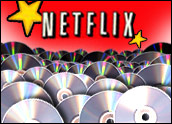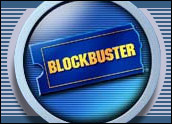
Hoping to keep itself relevant as more consumers seek video on demand via the Internet, Netflix launched a Web initiative Tuesday that gives subscribers the option of downloading and instantly watching movies online.
The company will roll out the service to subscribers over the next six months. Users will be given access to a certain amount of download time each month based on their Netflix subscription plan.
Netflix pioneered the DVD rent-by-mail business and has become a serious rival to Blockbuster, which last year debuted its own mail-based rental service.
Virtual Rental Stores
It may only be a matter of time before bricks and mortar-based DVD rentals and sales go the way of Betamax and eight-track tapes, to be replaced by high-definition video sent to customers via cable hookups or high-speed Internet connections.
The Netflix service, dubbed “Watch Now,” will include about 1,000 movies and television series titles at first, a fraction of the 70,000 DVDs in its current rental catalog.
“We named our company Netflix in 1998 because we believed Internet-based movie rental represented the future, first as a means of improving service and selection and then as a means of movie delivery,” said CEO Reed Hastings, adding that large scale consumer adoption of online movie watching will take a number of years due to content and technology hurdles.
A slew of companies — from Apple’s iTunes Movie Store to Amazon.com and Movielink — offer downloads, but most are focused on selling movies rather than renting them.
It was reported that Apple would offer a rental option, but that plan has apparently been snagged on pricing concerns from studios.
Meanwhile, Netflix has seen its main DVD rental rival, Blockbuster, invest heavily in its own by-mail offering, which has the added benefit of allowing subscribers to return or pick up movies at a Blockbuster store.
Ahead of the Curve
Watch Now will not require users to wait until a movie is downloaded, which can take considerable time even on high-speed Internet hookups. Instead, Netflix will use a real-time playback technology that will allow users to begin watching the movie within 10 to 15 seconds after downloading begins.
The service will require a Web browser applet to be installed, which Netflix said will take about one minute to download. The applet will recognize the user’s connection speed and deliver appropriate quality video, ranging up to DVD quality for users with 3 Mbps connections and faster.
Subscribers on the basic rental plan, which costs US$5.99 per month, will be able to watch up to six hours of online content each month, whereas those who subscribe to the three-DVDs-at-a-time plan — the most popular package, according to Netflix — will get 18 hours of on-demand viewing time.
In order to ensure a smooth customer experience, Netflix said that the new service would be implemented gradually to avoid crashing servers and other problems.
Initially, a quarter million Netflix subscribers will be given access to the service each week until all customers have gained access, which will be sometime in June, according to the company.
“Over the coming years we’ll expand our selection of films, and we’ll work to get to every Internet-connected screen, from cell phones to PCs to plasma screens,” he said. “The PC screen is the best Internet-connected screen today, so we are starting there.”
Future Tense
Even though Netflix has been growing its subscriber base and has posted strong earnings in recent quarters, increased marketing costs indicate that the firm is looking over its shoulder at its closest competitor, Blockbuster, which is gaining market share.
Blockbuster said last week that it ended 2006 with 2.2 million rent-by-mail subscribers.
For the time being, Watch Now may be an added enticement for members and prospective subscribers and not a viable alternative to watching DVDs. Netflix said that it would spend around $40 million, primarily on servers and related technology, to operate the service.
“People want to watch movies on their TVs,” said Yankee Group analyst Mike Goodman, who claimed that a key to unlocking video on demand as a market will be in creating an easy-to-use bridge to move content down to the TV.
A slew of such devices are on the way, including Apple’s iTV device unveiled earlier this month. Another important hurdle is getting more movie studios signed up to deliver content online, which may also mean offering them assurances that any lost revenue from DVD sales and rentals — a lifeblood for studios these days — would be replaced by new distribution methods.
“It’s still very early in the digital distribution days, but being out front could prove valuable in the long run,” Goodman claimed.
Netflix shares were trading higher by 2.2 percent in action Tuesday, to $23.21.
























































Social Media
See all Social Media